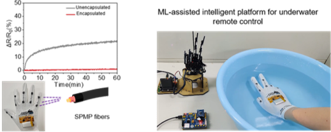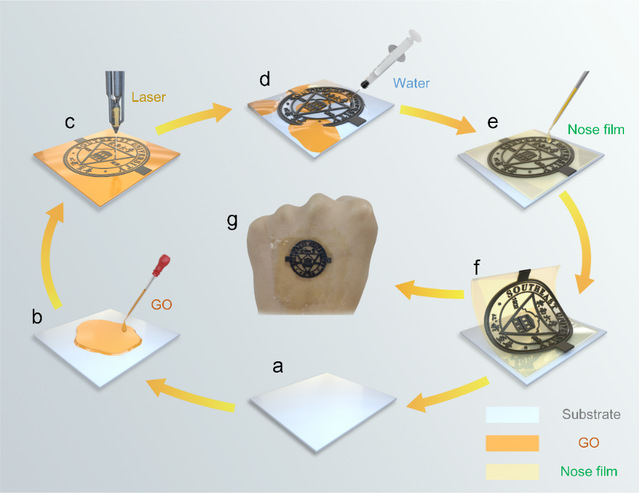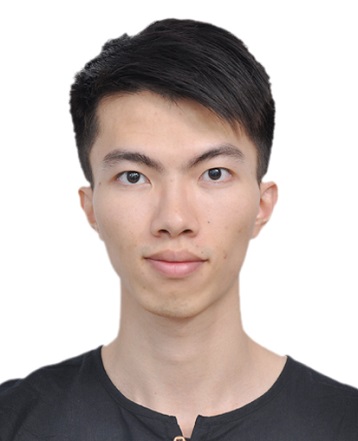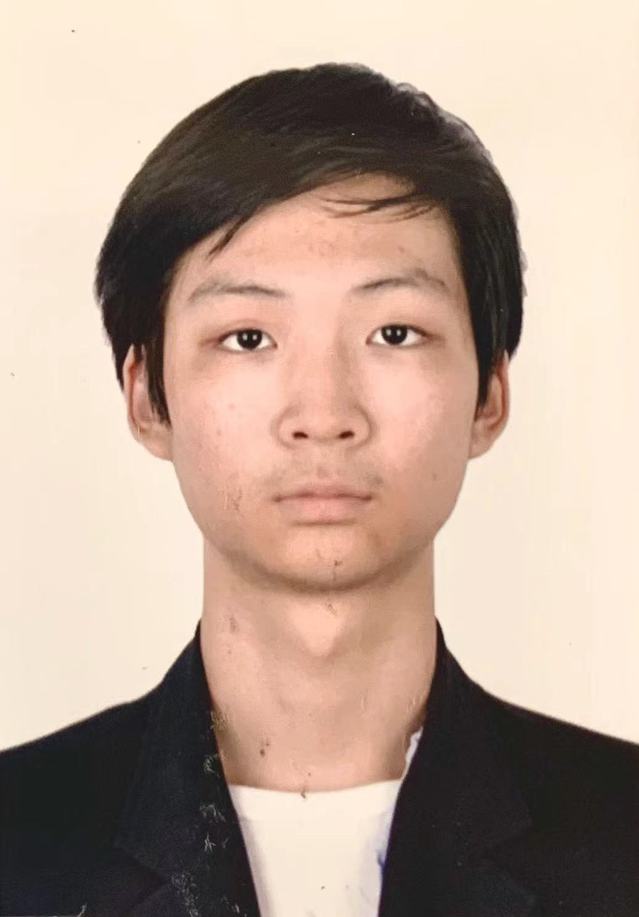 Jun Wu
Department:Display Research Center
BirthDate:1984.07
Degree:Ph.D
Career:Professor、Researcher
Post:Deputy Dean
Phone:025-83792449
Email:wujunseu@seu.edu.cn
OfficeLocation:Display R&D Center of Southeast University, No. 2, Sipai Building, Xuanwu District, Nanjing
PersonalProfile
Education
experience
· 2007.09 - 2012.09. Southeast University. Electronic Science and Technology. Tutor - Professor Baoping Wang. Ph.D.
· 2010.09 - 2012.06. University of California, Los Angeles. Tutor - Professor CJ.Kim. Joint PhD.
· 2003.09 - 2007.06. Southeast University. Electronic Science and Technology. B.D. Work Experience
· 2019.06 - present. Southeast University. School of Electronic Science and Engineering and School of Microelectronic. Deputy Dean. · 2018.01 - present. Southeast University. Zhishan Scholar (Level A). · 2017.01 - present. Southeast University. School of Electronic Science and Engineering. Doctoral Supervisor. · 2016.01 - present. Southeast University. School of Electronic Science and Engineering. Associate Professor. · 2014.09 - 2015.12. Southeast University. School of Electronic Science and Engineering. Lecturer. · 2013.01 - 2013.07. Singapore - MIT Alliance for Research and Technology (SMART) Center. Research Fellow. · 2012.09 - 2014.09. Southeast University. School of Electronic Science and Engineering. Postdoctor.  Jun Wu
Department:Display Research Center
BirthDate:1984.07
Degree:Ph.D
Career:Professor、Researcher
Post:Deputy Dean
Phone:025-83792449
Email:wujunseu@seu.edu.cn
OfficeLocation:Display R&D Center of Southeast University, No. 2, Sipai Building, Xuanwu District, Nanjing
Teach Course
Undergraduate Lesson - Display Technology; Undergraduate Lesson - Leadership Quality; Teaching Research
National Educational Reform Project Explorations and Practices on Innovation and Entrepreneurship Talent Training. National Educational Reform Project Top undergraduate major of China, Electronic Science and Technology. Provincial Educational Reform Project Research on College Entrepreneurship Education and Training. Provincial Educational Reform Project University Brand Construction II in Jiangsu Province, Electronic Science and Technology.  Jun Wu
Department:Display Research Center
BirthDate:1984.07
Degree:Ph.D
Career:Professor、Researcher
Post:Deputy Dean
Phone:025-83792449
Email:wujunseu@seu.edu.cn
OfficeLocation:Display R&D Center of Southeast University, No. 2, Sipai Building, Xuanwu District, Nanjing
Host Brief
Introduction:
●Flexible Electronics and Intelligent Sensors. ●Next-generation Display and Information Interaction. ●Nano Bio-materials and Devices. ●Next-generation electronics and systems applied in new power, health care, artificial intelligence, and optoelectronics.
Research Projects:
●National High-tech R&D Program of China (863 Program) funded project(15/01-17/12)Finished.PI.●National Natural Science Foundation of China (General Program) funded project(18/01-18/12)Finished.PI.●National Natural Science Foundation of China (Youth Program) funded project(14/01-16/12)Finished.PI.●Natural Science Foundation of Jiangsu Province of China(General Program) funded project(18/07-21/06)Under development.PI.●Natural Science Foundation of Jiangsu Province of China(Youth Program) funded project(13/07-16/06)Finished.PI.●China Postdoctoral Science Foundation funded project.(14/01-14/09)Finished.PI.●China Postdoctoral Science Foundation (General Program)funded project(12/09-14/08)Finished.PI.●Postdoctoral Science Foundation of Jiangsu Province(12/09-14/08)Finished. PI.●Innovative Pilot School Fund of Southeast University funded project(15/01-16/12)Finished.PI.
Research Results
[5].Duan, S. Lin, Y., Wang, Z.,Zhang, C.,Li, Y., Zhu, D., Wu, J*., Lei, W. Machine-learned, waterproof MXene fiber-based glove platform for underwater interactivities. Nano Energy.(2022)106650. Waterproofness is of value and critical for electronic systems, especially involving underwater interactivities. Yet, the most reported works are related to waterproof flexible sensors. System-level waterproof platforms integrating with sensing, processing and wirelessly transmitting to provide consumer-grade performance have been seldom reported. Herein, we construct a machine-learning-assisted waterproof hybrid electronic system via the whole encapsulation technique integrating fiber sensors and processing center based on FPCB so as to achieve fully underwater interactivities. The fiber sensors can be seamlessly integrated with the FPCB through knitting techniques, which exhibits excellent robustness, washability, and waterproofness, with resistance varying within in ±0.6% in tape water, sweat, and saline solution for up to 15 days. The hybrid platform is demonstrated for an underwater piano playing “Happy birthday to you” and remote control of a robotic hand underwater using the multilayer perceptron that achieves a 98.1% classification accuracy for 20 kinds of hand gestures. Our work may promote advances in waterproof system-level electronics from device design, system integration to algorithm optimization.
[4].Duan, S. Lin, Y., Wang, Z., Tang, J., Li, Y., Zhu, D.,Wu, J*., Tao, L,.Choi, C., Sun, L., Xia, J., Lei W. and Wang, B. Conductive Porous MXene for Bionic, Wearable, and Precise Gesture Motion Sensors.Research.(2021)9861467. Reliable, wide range, and highly sensitive joint movement monitoring is essential for training activities, human behavior analysis, and human-machine interfaces. Yet, most current motion sensors work on the nano/micro-cracks induced by the tensile deformation on the convex surface of joints during joint movements, which cannot satisfy requirements of, ultrawide detectable angle range, high angle-sensitivity, conformability, and consistence under cyclic movements. In nature, scorpions sense small vibrations by allowing for compression strain conversion from external mechanical vibrations through crack-shaped slit sensilla. Here, we demonstrated that ultra-conformal sensors based on controlled slit structures, inspired by the geometry of a scorpion’s slit sensilla, exhibits high sensitivity, ultralow angle detection threshold, fast response and relaxation times, wide range, and durability. Also, a user-friendly, hybrid sign language system has been developed to realize Chinese and American sign language recognition and feedback through video and speech broadcasts, making these conformal motion sensors promising candidates for joint movement monitoring in wearable electronics and robotics technology.
[3]Duan, S., Wang, B., Lin, Y., Li, Y., Zhu, D., Wu, J*., Xia, J., Lei, W. and Wang, B. (2021), Waterproof Mechanically Robust Multifunctional Conformal Sensors for Underwater Interactive Human–Machine Interfaces.Adv. Intell. Syst.(2021)2100056. Wearable sensors with water resistance and mechanical durability are of great value in dealing with long-term movement and remote control in harsh environments. However, achieving high sensitivity with long-term stability and real-time remote control in a watery environment is still a challenge. Here, we report the waterproof wearable sensors with good mechanical robustness composed of laser-induced graphene and in-situ coated protective silicone layers. By being integrated with high-capacitance ion-gel dielectrics, the conformal sensors can detect multiple stimuli, including strain, temperature, as well as pressure. The long-term water resistance of strain sensors is evaluated by continuously monitoring the resistance in underwater, sweat, and saline environment for up to 5.5 hours. Underwater wireless remote control of a robotic hand is further demonstrated by mounting five sensor arrays. Moreover, different finger gestures are well recognized, making these sensor devices promising candidates for versatile waterproof wearable electronics and robotics technology.
[2] Hong, J., Wu, J*., Mao, Y., Sh,i Q., Xia, J. and Lei, W. Transferred Laser Scribed Graphene Based Durable and Permeable Strain Sensor.Advanced Materials Interfaces (2021) Laser scribed graphene (LSG), with programmable patterns and superior electronic properties, has attracted considerable attention and has been widely investigated for various wearable electronics. However, its characteristics such as easy peeling and weak stretchability have prevented it from further industrial applications. Herein, this work has demonstrated a durable, biodegradable, skin-conformable LSG-based strain sensor by using a transfer technology and the dehydration characteristic of a commercial make-up accessory (nose film colloid), which has been declared as a pollution-free and skin-friendly flexible substrate. The sensor exhibits relatively high sensitivity of a gauge factor over 1200, large stretch range of more than 70% and stable piezoresistance responses after 5000 cyclic tests. It has an admirable durability that could maintains a stable resistance after the rubbing and scratching of sandpaper, and the biodegradbilty that could be totally dissolved within a few minutes.A series of human computer interaction applications, such as music glove, have been presented to prove the availability and sweat permeability of the sensor. The environmentally friendly properties of the sensor and the printable fabrication process reveal the possibility of the large-scale preparation of the flexible strain sensor.
[1]Lin, Y., Duan, S.,Wu, J*., Zhu, D., Li, Y.and Wang B. Self-Powered and Interface-Independent Tactile Sensors Based on Bilayer Single-Electrode Triboelectric Nanogenerators for Robotic Electronic Skin. Advanced Intelligent Systems(2021) Self-powered flexible tactile sensors based on triboelectric nanogenerators (TENGs) can be of use in the development of robotic intellisense and interaction.Such sensors typically use triboelectronegative material as top layer, requiring contacting and separating with specific interface material to operate, and may result in suboptimal performance under practical conditions. Here we report a self-powered interface-independent tactile sensor array that is based on bilayer single-electrode TENGs. By integrating both triboelectronegative and triboelectropositive layers in the structure, our sensor overcomes the material restriction of top layer and could sense applied pressure from any material. Furthermore, we fabricatea 5×5 sensor array to realize the detection of contact point and the recognition of trajectory. Last, the sensor array is successfully implemented as electronic skin (e-skin) in a robotic hand for tactile sensing and human-machine interaction. In this regard, it can be envisioned that such tactile sensors possess a promising application in intelligent robots including robotic e-skin and artificial intelligence.
Academic Part-time
ICEDA 2021 Conference. Cochair. Electronics Special Issue. Editor in deputy. National Experimental Teaching Demonstration Center, Lab for Information Science and Electronic Science. Deputy director. Society for Information Display. Member. Institute of Electrical and Electronics Engineers. Member. Nanotechnology Commitee of Jiangsu Vacuum Society. Deputy director. Nanjing Flat Panel Display Industry Association. Vice president. Peer reviewer of ACS Nano, Small, Applied Physics Letters, Organic Electronics, Optics Letters, etc. Publications
 Jun Wu
Department:Display Research Center
BirthDate:1984.07
Degree:Ph.D
Career:Professor、Researcher
Post:Deputy Dean
Phone:025-83792449
Email:wujunseu@seu.edu.cn
OfficeLocation:Display R&D Center of Southeast University, No. 2, Sipai Building, Xuanwu District, Nanjing
Jiangsu Science and Technology Association. Chief Scientist. Southeast University. Awarded as Zhishan Sholar. Southeast University. Awarded as the Most Popular Teacher.  Jun Wu
Department:Display Research Center
BirthDate:1984.07
Degree:Ph.D
Career:Professor、Researcher
Post:Deputy Dean
Phone:025-83792449
Email:wujunseu@seu.edu.cn
OfficeLocation:Display R&D Center of Southeast University, No. 2, Sipai Building, Xuanwu District, Nanjing
Team Introduction
Research group was founded since 2012 and with team effort, the equipment and staffing have taken shape. In addition to full-time teachers, there are two doctoral students and eight master students. The group focuses on electronic skins, smart textiles, ultra-flexible thin-film devices, bio-electronics, and intelligent robots.
Admissions
We highly value the graduate and undergraduate training with periodic group meeting, a certain set of training plans and regulations. Besides, team bonding is one of the focal points as well.
Graduates
Introduction
|













